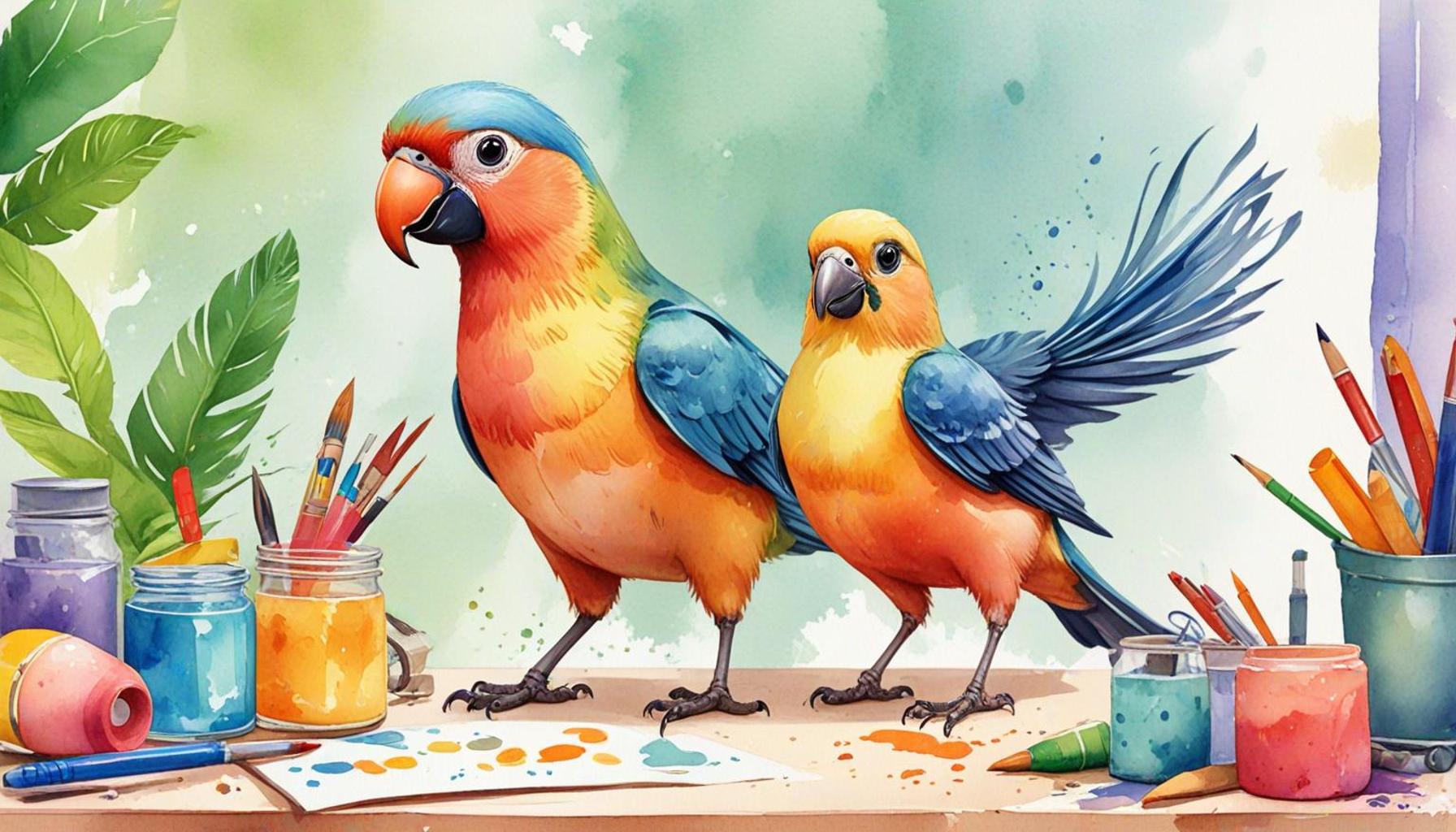Training Small Mammals: Methods for Hamsters, Rabbits, and Guinea Pigs

The Joy of Training Small Mammals
Small mammals like hamsters, rabbits, and guinea pigs bring immense joy and companionship into many homes. In Nigeria, as the trend of pet ownership grows, families are increasingly recognizing the unique personalities and playful natures of these charming creatures. Beyond their adorable appearances, these pets can also be trained, which enhances their behavior and strengthens the bond between pet and owner. Training provides essential mental stimulation and can greatly improve the overall well-being of these small mammals.
Implementing effective training methods can lead to a more harmonious living environment. By dedicating time to training, pet owners can enjoy numerous benefits, including:
- Improved behavior and reduced unwanted actions: Training can help curb negative behaviors, such as chewing furniture or excessive digging, by teaching pets appropriate actions.
- Enhanced mental and physical well-being: Regular training exercises can keep small mammals mentally sharp and physically active, preventing issues like obesity and boredom.
- Strengthened human-animal relationships: Devoting time to training fosters a deeper bond, creating a trusting and affectionate relationship between pet and owner.
It is important to note that each species of small mammal has its own unique training needs and styles. For example:
- Hamsters: Known for their cleverness, hamsters can be trained using positive reinforcement techniques. They respond well to treats and can learn simple tricks such as navigating mazes or rolling through hoops.
- Rabbits: Rabbits are among the most trainable small mammals. They can be litter trained, which significantly simplifies caring for them. Additionally, with patience, they can learn to come when called, following their owner’s lead for a tasty treat.
- Guinea Pigs: These social creatures thrive on interaction. With dedication, guinea pigs can learn to perform simple movements or tricks in exchange for food rewards, making training an engaging experience for both pet and owner.
As families in Nigeria look to develop a strong bond with their pets, understanding effective training methods becomes crucial. This article will explore various techniques tailored specifically for small mammals, providing practical tips that are easy to implement. The aim is to make training enjoyable and rewarding for both you and your furry companions, ensuring a nurturing environment where joy abounds.
By enriching the lives of small mammals through training, owners not only enhance their pets’ quality of life but also enrich their own experiences, fostering a deeper connection filled with trust and love.
RECOMMENDED: Check out this similar article
Understanding Training Techniques for Small Mammals
Training small mammals may seem daunting, especially for new pet owners, but with the right approach, it can become a rewarding experience for both the pet and their guardian. Knowing the specific characteristics and behaviors of hamsters, rabbits, and guinea pigs is essential in applying effective training methods. Each species has its distinct traits that can influence how they respond to training techniques.
When it comes to training small mammals, positive reinforcement stands out as one of the most effective approaches. This method encourages desirable behavior by rewarding pets with treats, praise, or playtime when they successfully complete a task or follow a command. Understanding the motivations of your pet—whether it be food, affection, or exploration—will help in determining the best rewards to use.
Training Hamsters
Hamsters, renowned for their swift movements and inquisitive nature, can be trained in various ways. Due to their small size, they may require a gentle and patient approach. Owners can teach hamsters tricks like running through hoops or retrieving small objects using a simple setup of mazes and tunnels. The training process should be fun, as hamsters are naturally curious and can easily become bored. Important tips for training hamsters include:
- Consistency: Train your hamster at the same time each day to establish a routine.
- Short sessions: Keep training sessions brief, about 5 to 10 minutes, to maintain their interest.
- Positive Association: Use high-value treats like sunflower seeds to create a positive association with training sessions.
Training Rabbits
Often regarded as one of the most trainable small mammals, rabbits possess incredible intelligence. They can be litter trained with relative ease, significantly simplifying litter box maintenance. In addition to learning to use a designated spot, rabbits can be taught to respond to their names or perform tricks like hopping through hoops or spinning in circles. To foster a productive training environment for rabbits, consider the following:
- Start with their preferences: Use treats that your rabbit loves, like fresh herbs or small pieces of fruit, to motivate them.
- Build trust: Spend quality time with your rabbit outside of training sessions to develop trust; this can make them more willing to learn.
- Be patient: Some rabbits may take longer to understand commands, so persistence and patience are key.
Training Guinea Pigs
Guinea pigs, while perhaps not as intellectually adept as hamsters or rabbits, exhibit a strong desire for interaction and companionship. They can learn simple tricks and commands with consistent training methods. The key to successful training lies in understanding how to keep them engaged. Here are some valuable training tips for guinea pigs:
- Group training: Guinea pigs are social animals; training them in pairs or groups can make the experience more enjoyable.
- Use their natural instincts: Utilize their foraging instinct by hiding treats in their enclosure to stimulate their minds.
- Frequent, short sessions: Just like other small mammals, guinea pigs respond best to short, engaging training practices.
In conclusion, training small mammals such as hamsters, rabbits, and guinea pigs requires understanding their behavioral tendencies and using positive reinforcement as a core method. By observing their unique characteristics and preferences, pet owners in Nigeria can build enriching and enjoyable training experiences. Training not only encourages good behavior but also enhances the bond between pets and their people, creating a vibrant, loving home filled with joy.
| Training Methods | Advantages |
|---|---|
| Positive Reinforcement | Enhances trust and bonding with pets, encouraging them to participate in training. |
| Clicker Training | Provides clear communication, leading to quicker learning and retention of commands. |
| Socialization Techniques | Results in well-adjusted pets, reducing stress in new environments. |
| Obstacle Courses | Encourages physical activity and mental stimulation, leading to a healthier lifestyle. |
Training small mammals like hamsters, rabbits, and guinea pigs involves a variety of effective techniques tailored to their unique needs. Among these, positive reinforcement stands out, as it not only promotes learning but also strengthens the bond between pet and owner. Additionally, clicker training is another innovative method that emphasizes clear commands, making it easier for these animals to understand and retain what they have learned.Socialization techniques are crucial for helping small mammals adjust smoothly to new environments, ultimately leading to happier and less stressed pets. Moreover, the use of creative obstacle courses keeps your furry friends engaged and physically active, encouraging a healthy lifestyle that mitigates obesity risks common among smaller pets. Embracing these methodologies will not only improve your pet’s behavioral skills but also enrich their overall quality of life. The knowledge and insights gained from these training methods are invaluable for any small mammal owner looking to enhance the bond with their pets.
SEE ALSO: Click here to read another article
Enhancing Training Through Enrichment and Socialization
Training small mammals effectively goes beyond simply teaching them commands; it also involves creating an enriching environment that fosters natural behaviors while keeping your pet engaged and motivated. Understanding the importance of enrichment in training provides a pathway for developing strong, trusting relationships with hamsters, rabbits, and guinea pigs.
Environmental Enrichment for Small Mammals
Enrichment refers to providing a stimulating environment that encourages exploration and activity. For small mammals, this can mean a variety of physical structures, textures, and challenges within their living spaces. A well-enriched environment is crucial for the mental and physical well-being of these animals, enhancing their capacity to learn. Consider incorporating the following enrichment tips:
- Varied Terrain: Use tunnels, ramps, and climbing structures for rabbits and hamsters. Guinea pigs appreciate cozy hideouts made from materials like hay or cardboard cartons.
- Interactive Toys: Toys that dispense treats or require manipulation (like ball mazes) not only keep your pet entertained but also promote cognitive skills.
- Natural foraging: Scatter hay or pellets around their enclosure, mimicking a foraging environment that encourages investigation and activity.
Integrating these elements into their habitation can significantly enhance training outcomes. For instance, rabbits trained in an enriched environment may learn commands faster due to increased stimulation and motivation to explore. This method is particularly applicable in urban areas of Nigeria where space can be limited; even small alterations to living spaces can provide significant benefits.
Utilizing Socialization Strategies in Training
Small mammals are inherently social creatures. Their instincts prompt them to seek companionship and safety within a group. Leveraging socialization strategies during the training process can lead to faster and more effective results. Here are some methods to enhance training through social interaction:
- Play Dates: Introduce your pet to other small mammals in a controlled environment, allowing them to observe and interact with one another. This not only promotes social skills but can enhance their willingness to learn behaviors demonstrated by other animals.
- Incorporate Family Members: Involve other family members during training sessions to expose your pet to various voices and touch. This diverse interaction can help them become more adaptable and responsive.
- Routine Adjustments: Schedule training with designated family members for consistency. This familiarizes your pet with different people, making them comfortable in various scenarios.
It is crucial, particularly for rabbits and guinea pigs, to ensure that interactions are always positive and without stress. For those residing in urban settings like Lagos, Nigeria, regular access to community spaces can facilitate safe socialization opportunities.
Addressing Behavioral Issues During Training
Understanding common behavioral issues is essential for effective training. Small mammals can exhibit behaviors stemming from anxiety or stress, such as hiding, chewing, or excessive vocalization. Recognizing these signs allows owners to adjust their training methods accordingly. Here are some insights on managing these concerns:
- Identify Triggers: Observe your pet’s reactions to certain situations or environments that may instigate their anxiety. Adjusting their surroundings or approach can significantly reduce stress levels.
- Provide Safe Spaces: Create a safe, quiet area for your pet to retreat to when feeling overwhelmed. This sanctuary can facilitate trust, which is vital for effective training.
- Gradual Introduction: If introducing new stimuli or environments, do so slowly. Gradual exposure can help your pet acclimate without feeling overwhelmed.
Addressing these issues head-on can foster a more serene training atmosphere, while also improving the general well-being of small mammals. By focusing on environmental enrichment, socialization, and behavioral understanding, pet owners in Nigeria can nurture well-behaved and happy small mammals, creating a harmonious bond that goes beyond simple training commands.
ADDITIONAL INSIGHTS: Expand your understanding here
Conclusion: Building Bonds Through Effective Training
In conclusion, training small mammals such as hamsters, rabbits, and guinea pigs involves a multifaceted approach that encompasses environmental enrichment, socialization strategies, and a keen understanding of their behavior. By creating an enriching environment filled with varied terrains and interactive toys, pet owners can significantly enhance their pets’ ability to learn and thrive. Such environments not only promote physical activity but also stimulate cognitive growth, allowing small mammals to develop essential skills more effectively.
Moreover, recognizing the importance of social interactions can accelerate the training process. Facilitating playdates and including family members in training sessions helps small animals become adaptable and responsive, fostering a deeper bond with their owners. These connections are vital for their emotional well-being, especially in bustling urban areas of Nigeria, where the stimulation of community spaces can further benefit these pets.
Additionally, being attuned to behavioral issues and their triggers enables owners to tailor their training methods, creating a positive learning atmosphere. By incorporating safe spaces and gradually introducing new experiences, owners can minimize stress and enhance their pets’ overall happiness.
Ultimately, successful training transcends mere command obedience; it is about forging deep, trusting relationships. For pet owners in Nigeria and beyond, the journey of training small mammals opens doors to enriched lives for both pets and owners, filled with joy and companionship. Whether it’s through playful interactions or thoughtful environmental designs, the effort invested in training pays off by cultivating well-mannered and fulfilled small mammals.


